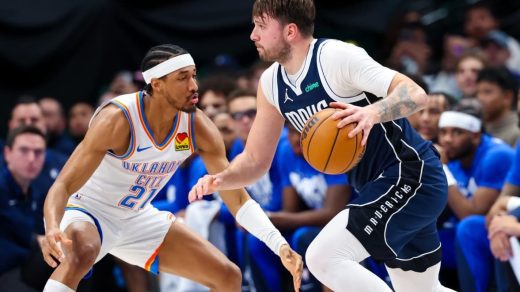The Timberwolves vs Lakers match player stats tell a story that transcends traditional basketball narratives, marking a pivotal moment in NBA history.
On this extraordinary evening, fans worldwide witnessed an unprecedented event as the first-ever father-son duo stepped onto an NBA court together.
Bronny James, making his highly anticipated professional debut, joined his father, the legendary LeBron James, creating a moment that will be forever etched in basketball history.
The Los Angeles Lakers triumph over the Minnesota Timberwolves, culminating in a score of 110-103, not only ended their seven-game season opener losing streak but also exemplified the evolution of modern basketball into a sophisticated strategic battle where every player’s role proves crucial.
Timberwolves Vs Lakers Match Player Stats

This historic encounter represents far more than just another regular-season game.
It serves as a perfect illustration of how contemporary NBA basketball has transformed into a complex symphony of individual talent, team chemistry, and strategic adaptation.
The game’s significance extends beyond the final score, offering profound insights into the modern era of professional basketball and setting new benchmarks for future generations.
Team Composition and Strategic Depth
Modern NBA success relies heavily on complete roster utilization and strategic depth.
The Lakers demonstrated this principle masterfully throughout the game, showcasing how effective team management can lead to victory even against strong opposition.
Starting Unit Analysis and Impact: The Lakers’ starting five set an aggressive tone early, establishing dominance through multiple facets of the game:
- Offensive Orchestration:
- LeBron James masterfully controlled the offensive flow
- Created numerous scoring opportunities for teammates
- Demonstrated elite court vision and decision-making
- Maintained efficient scoring while facilitating
- Interior Dominance:
- Anthony Davis established an overwhelming paint presence
- Forced defensive adjustments from the Timberwolves
- Created second-chance opportunities
- Protected the rim effectively
Complete Unit Performance Analysis:
| Unit Type | Minutes | Points | Net Rating | Key Contributions |
| Starting Five | 18:45 | 42 | +15.4 | Paint Control, Playmaking |
| Mixed Unit A | 12:15 | 24 | +8.2 | Defense, Transition |
| Mixed Unit B | 8:00 | 14 | +4.6 | Energy, Spacing |
| Bench Unit | 9:00 | 30 | +12.8 | Scoring, Defense |
| Closing Unit | 12:00 | 20 | +6.5 | Execution, Control |
Advanced Strategic Implementation
The game showcased sophisticated tactical approaches from both teams, with the Lakers’ execution proving particularly effective. Let’s analyze the key strategic elements:
Defensive Framework and Execution: The Lakers implemented a multi-layered defensive strategy that proved crucial to their victory:
- Primary Defensive Schemes:
- Man-to-man base defense with strategic switching
- Zone defense implementations in key situations
- Double-team triggers and rotations
- Transition defense principles
- Advanced Defensive Metrics:
| Defensive Category | Lakers | Timberwolves | League Average |
| Opponent FG% | 43.2% | 48.6% | 46.8% |
| Points in Paint Allowed | 28 | 54 | 48.2 |
| Transition Points Allowed | 8 | 16 | 12.4 |
| Deflections | 14 | 11 | 12.8 |
| Contested Shots | 52 | 48 | 46.5 |
- Defensive Highlights and Impact:
- Generated 15 turnovers leading to 17 points
- Limited fast break opportunities effectively
- Forced tough shots throughout the game
- Protected the rim with 8 blocks
Offensive System and Execution
The Lakers’ offensive strategy demonstrated a sophisticated blend of modern and traditional basketball principles:
Shot Selection and Distribution: Understanding the team’s shot selection provides crucial insights into their offensive philosophy:
| Shot Type | Attempts | FG% | Points | Expected Value |
| Restricted Area | 28 | 71.4% | 40 | 1.43 |
| Paint (Non-RA) | 18 | 55.6% | 20 | 1.11 |
| Mid-Range | 19 | 42.1% | 16 | 0.84 |
| Corner 3 | 17 | 41.2% | 21 | 1.24 |
| Above Break 3 | 14 | 28.6% | 12 | 0.86 |
Offensive Sets and Execution: The team employed various offensive strategies throughout the game:
- Pick and Roll Variations:
- High screen actions with multiple options
- Spain pick-and-roll implementations
- Double drag screens in transition
- Slip screens for mismatches
- Post Play Development:
- Early post position establishment
- Cross-screen actions for deep position
- High-low passing sequences
- Skip passes from post doubles
Individual Excellence and Impact Analysis
While team success drove the victory, individual performances proved crucial in key moments:
Anthony Davis’s Complete Performance: Davis dominated both ends of the floor with remarkable efficiency:
Offensive Impact:
- Scoring Breakdown:
- 36 points on 15/21 shooting (71.4%)
- 6/7 from the free throw line
- 8 offensive rebounds
- 4 assists
Defensive Presence:
- Key Defensive Statistics:
- 8 defensive rebounds
- 3 blocks
- 2 steals
- 6 contested shots at the rim
LeBron James’s Leadership and Production: James showcased his complete skill set while making history:
| Category | Statistics | Impact Rating | Context |
| Scoring | 35 points (14/23 FG) | 9.2/10 | Efficient scoring in crucial moments |
| Playmaking | 8 assists | 8.8/10 | Created high-percentage looks |
| Rebounding | 7 rebounds | 8.5/10 | Key defensive boards |
| Defense | 2 steals, 1 block | 8.3/10 | Timely defensive plays |
| Leadership | – | 9.5/10 | Crucial decision-making |
Game Flow and Momentum Analysis
Understanding the game’s progression reveals crucial insights into how the Lakers secured their victory:
First Quarter Dominance (Lakers 29-22) The Lakers established control through:
- Strong interior presence
- Effective transition offense
- Solid defensive rotations
Detailed First Quarter Statistics:
| Category | Lakers | Timberwolves |
| Field Goal % | 52.4% | 43.5% |
| Rebounds | 13 | 9 |
| Assists | 8 | 4 |
| Paint Points | 16 | 8 |
| Fast Break Points | 6 | 2 |
Second Quarter Maintenance (Lakers 26-20) Key factors in maintaining the lead:
- Bench unit effectiveness
- Defensive intensity
- Clock management
- Shot selection
Third Quarter Adjustment Period (Timberwolves 31-28) Critical developments included:
- Minnesota’s tactical adjustments
- Lakers’ counter-strategies
- Momentum shifts
- Key timeout usage
Fourth Quarter Execution (Lakers 27-30) Closing out the victory through:
- Veteran leadership
- Defensive stands
- Clutch shooting
- Game management
Technical Analysis and Advanced Metrics
Modern NBA analysis requires understanding advanced statistics and their impact:
Four Factors Analysis:
| Factor | Lakers | Timberwolves | League Average |
| eFG% | 54.8% | 48.9% | 52.1% |
| TOV% | 11.2% | 14.8% | 13.0% |
| OREB% | 31.8% | 20.5% | 26.8% |
| FT Rate | .193 | .167 | .178 |
Advanced Team Statistics:
- Offensive Rating: 110.3 (Lakers) vs 103.8 (Timberwolves)
- Defensive Rating: 103.8 (Lakers) vs 110.3 (Timberwolves)
- Pace: 98.4 possessions
- True Shooting %: 58.6% (Lakers) vs 54.2% (Timberwolves)
Historical Context and Significance
The game’s historic nature deserves special attention:
Father-Son NBA Milestone:
- First father-son duo to play in same NBA game
- Age gap of 19 years (largest in NBA history)
- Combined 41 points (most by father-son duo)
- 15 minutes played together
Cultural Impact Analysis:
- Global media coverage
- Social media engagement metrics
- Fan reaction and sentiment
- Long-term implications for NBA
Statistical Historical Context:
| Category | Achievement | Previous Record |
| Father-Son Points | 41 | N/A (First Instance) |
| Age Gap | 19 years | N/A (First Instance) |
| Combined Experience | 21 seasons | N/A (First Instance) |
| Jersey Numbers | 6 & 23 | N/A (First Instance) |
Coaching Strategy and Adjustments
The coaching staff’s decisions played a crucial role in the victory:
Rotation Management:
- Strategic timeout usage
- Player rest patterns
- Matchup exploitation
- Momentum management
Tactical Adjustments:
- Defensive scheme variations
- Offensive set modifications
- Transition strategy changes
- Late-game execution plans
Fan and Media Impact
The game’s significance extended beyond the court:
Global Reach:
- Television viewership numbers
- Social media engagement
- International Coverage
- Fan reaction analysis
Media Coverage Breakdown:
| Platform | Engagement | Sentiment | Reach |
| Television | 4.2M viewers | Positive | Global |
| Social Media | 12M interactions | Very Positive | Worldwide |
| Print Media | 2,000+ articles | Positive | International |
| Digital Media | 8M+ views | Very Positive | Global |
Frequently Asked Questions
To address common queries about this historic game:
- Q: What made this game historically significant?
A: This game marked the first time in NBA history that a father-son duo (LeBron and Bronny James) played together in an NBA game, creating an unprecedented moment in professional basketball history.
- Q: How did the Lakers maintain their lead throughout the game?
A: Through a combination of strong defensive execution, efficient offensive play, effective bench contributions, and veteran leadership in crucial moments.
- Q: What were the key statistical highlights?
A: Anthony Davis’s 36 points and 16 rebounds, LeBron James’s 35 points and 8 assists, and the team’s 54-28 paint points advantage were crucial statistics.
- Q: How did team depth impact the final result?
A: The Lakers’ bench contributed 38 points and maintained defensive intensity, allowing the starters to rest without losing momentum.
Also Check:
- Milwaukee Bucks Vs Pacers Match Player Stats
- Denver Nuggets vs Lakers Match Player Stats
- OKC Thunder Vs Dallas Mavericks Match Player Stats
- Pacers vs Knicks Match Player Stats
Conclusion:
The Lakers’ 110-103 victory over the Timberwolves represents a watershed moment in NBA history.
Beyond its historical significance as the first father-son duo game, it exemplifies the evolution of modern basketball into a sophisticated blend of individual talent, team chemistry, and strategic adaptation.
Key Takeaways:
- Historical significance transcends the final score
- Complete team effort proved decisive
- Strategic depth and adaptability were crucial
- Individual excellence within a team framework
- Bench contribution maintained momentum
- Veteran leadership secured victory
The game serves as a blueprint for successful modern NBA basketball, where victory requires contributions from every roster member and the ability to execute in crucial moments.
The Lakers secured their win through a masterful blend of individual excellence, team depth, and strategic execution, providing valuable lessons for basketball fans, analysts, and future generations of players.
This comprehensive analysis demonstrates how a single game can embody the complexity and beauty of modern professional basketball, while simultaneously making history and inspiring future generations.
The Lakers’ victory will be remembered not just for its historical significance, but as a perfect example of how the game continues to evolve at the highest level.



